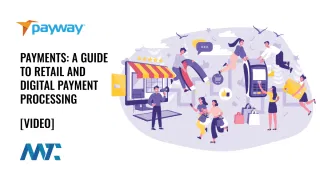Meta Pay, formerly known as Facebook Pay, is Meta’s digital payment platform designed to make transactions seamless across its family of apps—including Facebook, Instagram, WhatsApp, and Messenger. While most consumers are familiar with Meta Pay for peer-to-peer (P2P) payments or in-app purchases, there’s a growing opportunity for businesses to leverage Meta Pay to accept payments directly and receive funds for products and services.
Understanding how Meta Pay works and how to apply is increasingly relevant for businesses operating within Meta’s ecosystem—especially those engaging in social commerce, selling through Facebook Shops, or running Instagram Checkout.
What is Meta Pay?
Meta Pay is a digital wallet that allows users to store payment methods and make purchases within Meta’s apps without re-entering card details. For businesses, Meta Pay offers a built-in payment infrastructure that removes friction from the buying process and helps capture sales directly on the platform.
Consumers can use Meta Pay to purchase products, donate to fundraisers, buy event tickets, and more. Integrating Meta Pay enables businesses to receive these payments securely while benefiting from Meta’s global payment infrastructure.
Why Businesses Should Consider Accepting Meta Pay
Meta Pay is not just a convenience feature — it’s becoming part of a broader strategy for social commerce. Here’s why:
- Frictionless Checkout Experience: Meta Pay reduces the steps required for a customer to complete a purchase. In social selling, especially on mobile, every click matters. Fewer barriers mean higher conversion rates.
- Integrated With Social Commerce Tools: If you’re using Facebook Shops, Instagram Shopping, or Messenger for customer service and sales, Meta Pay enables you to accept payments directly within those experiences.
- Access to Meta’s User Base: Meta boasts billions of active users across its platforms. Many of them already have Meta Pay enabled, meaning businesses can sell to a user base already familiar with the payment process.
- Enhanced Trust and Security: Payments are protected by advanced security features, including anti-fraud technology, encryption, and Meta’s customer support. This can give customers more confidence when buying directly through social media.
Business Use Cases for Meta Pay
Businesses that could benefit from accepting Meta Pay include:
- Retailers with a strong presence on Facebook or Instagram.
- Creators selling merchandise directly to followers.
- Nonprofits collecting donations via Facebook Fundraisers.
- Event organizers selling tickets within Facebook Events.
- Service providers offering paid consultations or digital downloads.
How to Apply for Meta Pay as a Business
If your business is interested in receiving payments through Meta Pay, here’s the process to get started:
1. Ensure Eligibility
Currently, Meta Pay for business payments is available in select regions and for certain types of transactions, particularly those involving commerce products like Facebook Shops or Instagram Checkout. You’ll need:
- A Meta Business Manager account.
- A connected Facebook Page or Instagram Business Profile.
- A Facebook Commerce Account with a catalog set up.
- Compliance with Meta’s Commerce Policies and Terms of Service.
2. Set Up Facebook Commerce Manager
To enable payments and receive funds:
- Go to Facebook Commerce Manager.
- Create a Commerce Account.
- Add your product catalog.
- Set up payout information, including bank account details and tax information.
3. Enable Meta Pay
If you are selling products directly through Facebook Shops or Instagram Checkout, Meta Pay will be enabled for your customers automatically as part of the checkout experience.
You’ll be able to:
- Accept payments via credit/debit cards, PayPal, and Meta Pay.
- Track orders and payouts through Commerce Manager.
- Access transaction reports and tax documentation.
4. Receiving Funds
Payouts from Meta Pay are typically sent to your linked bank account regularly (often daily or weekly), depending on your settings and region. Funds may take a few business days to clear.
Meta does not currently charge businesses additional fees for accepting payments via Meta Pay beyond standard payment processing fees associated with credit cards or PayPal.
Considerations Before Applying
Businesses should weigh several factors before fully committing to Meta Pay:
- Platform Dependency: Relying exclusively on Meta’s ecosystem could limit control compared to owning your e-commerce site.
- Transaction Fees: While Meta Pay doesn’t charge extra fees, payment processing fees still apply.
- Compliance and Policies: Businesses must adhere to Meta’s strict commerce guidelines, prohibiting certain product categories and requiring transparency.
Meta Pay is quickly evolving from a consumer payment tool to an essential component of Meta’s vision for social commerce. For businesses already leveraging Facebook or Instagram to engage customers, integrating Meta Pay offers a streamlined way to accept payments, drive conversions, and tap into Meta’s built-in audience.
As social platforms increasingly blur the lines between content, engagement, and commerce, adopting Meta Pay may improve the customer experience and position your business to capitalize on emerging trends in social selling.
Businesses interested in accepting payments through Meta Pay should begin by setting up their Commerce Manager account, ensuring compliance with Meta’s policies, and preparing for a future where customers expect seamless, in-platform transactions.
